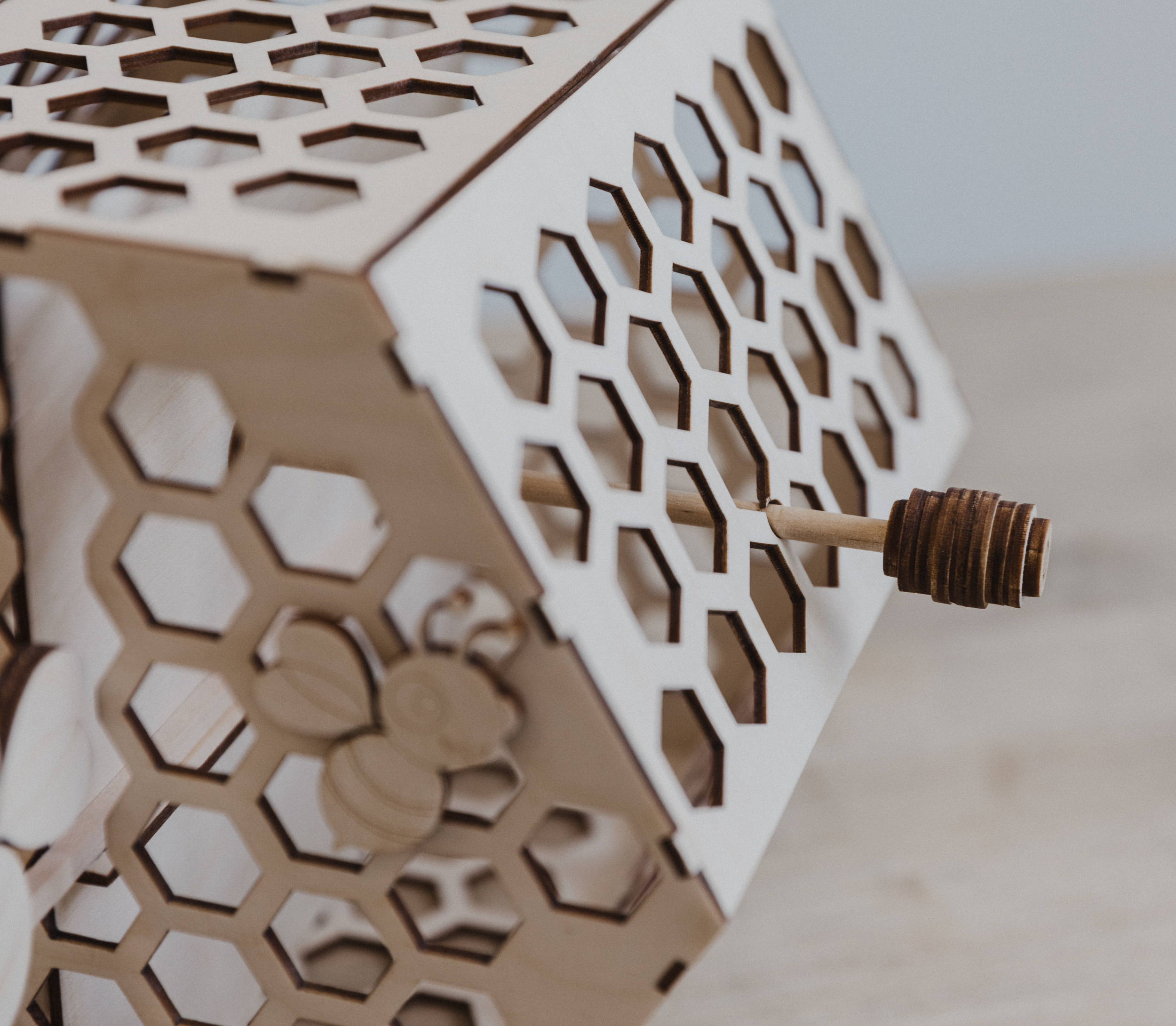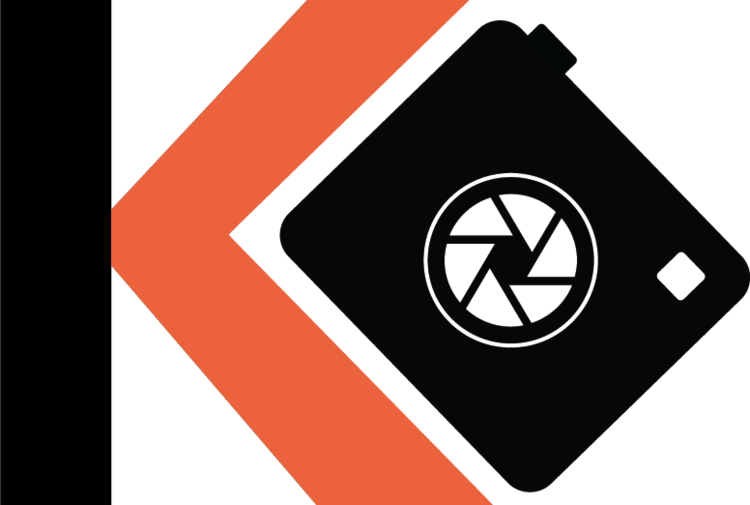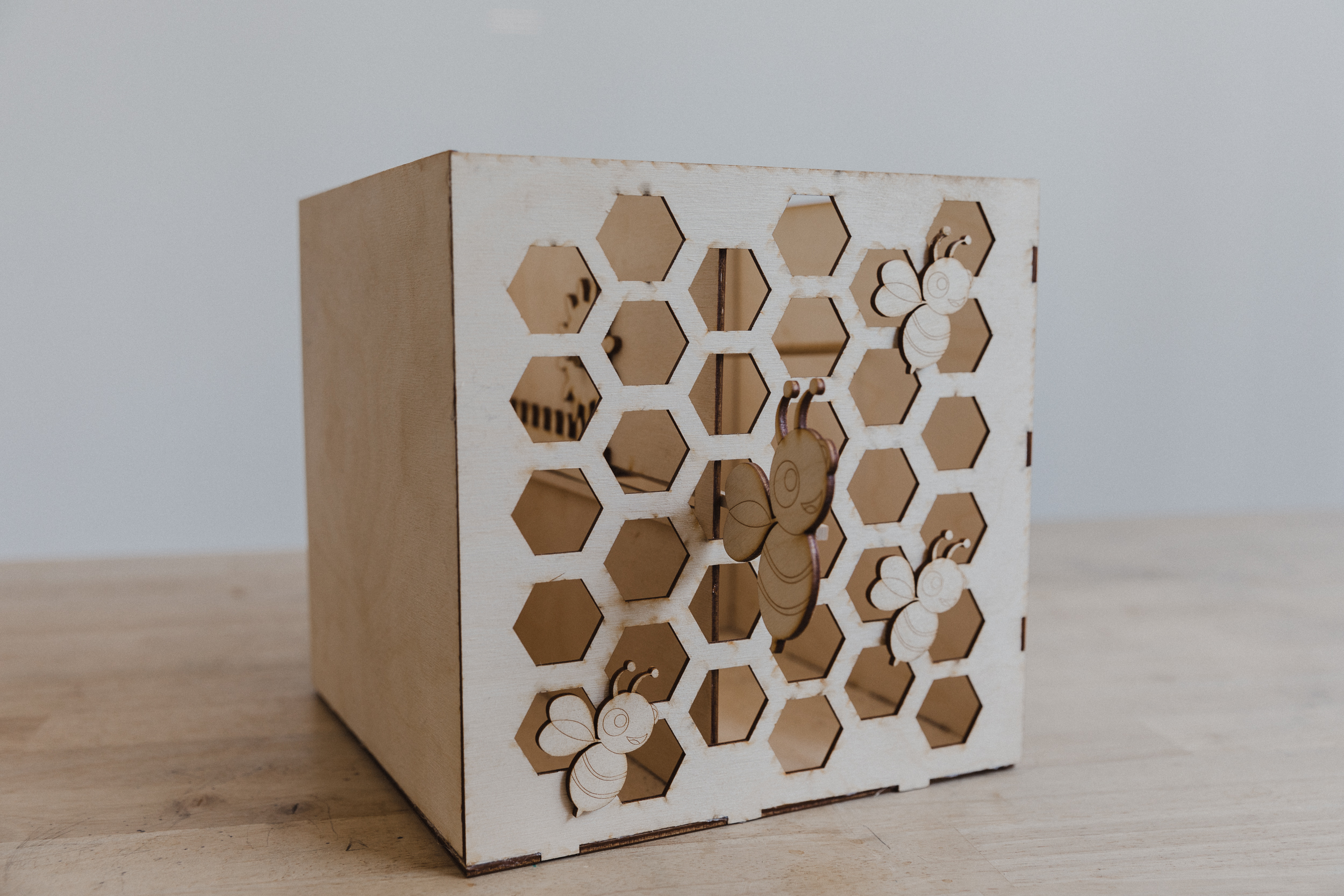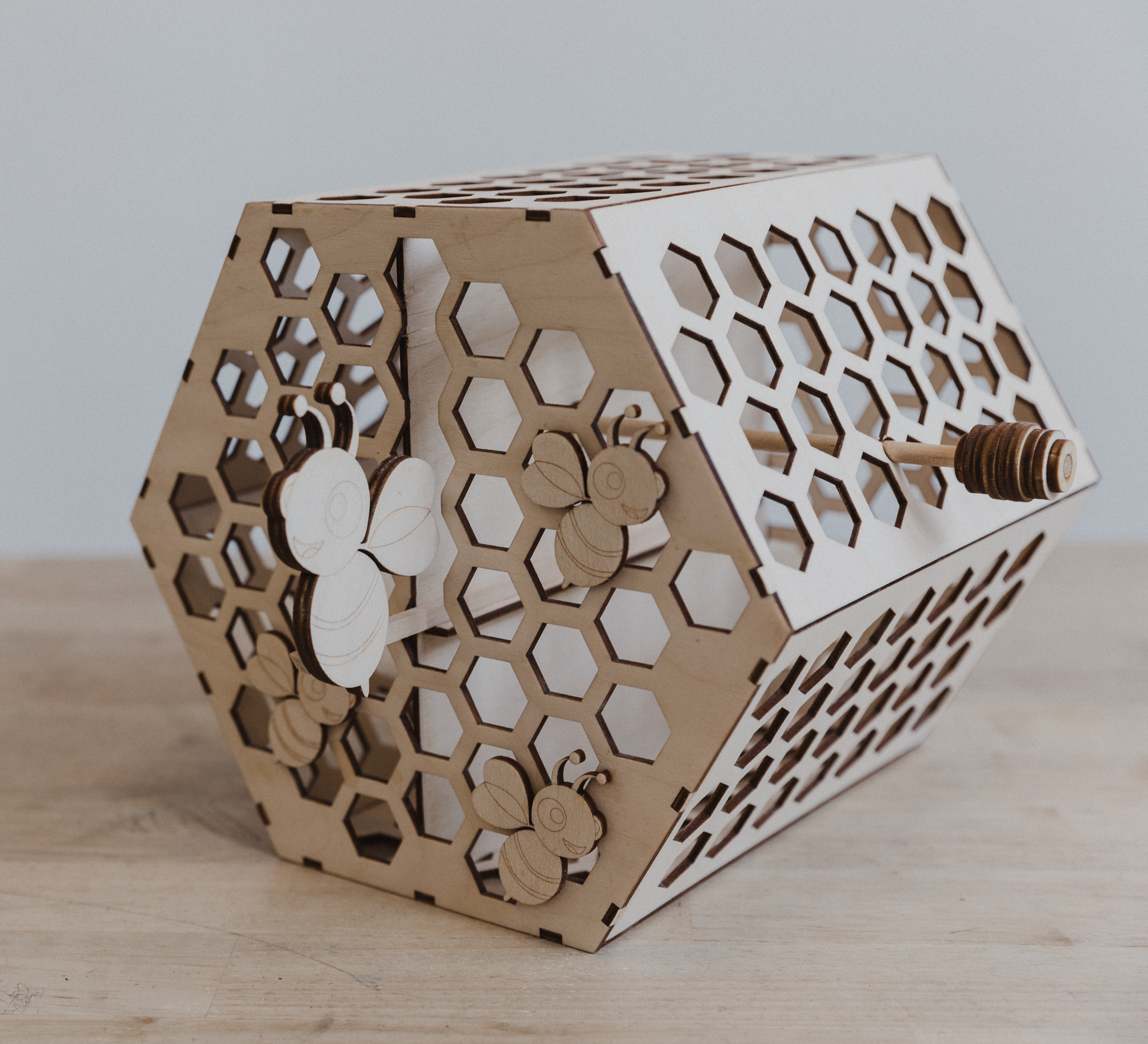
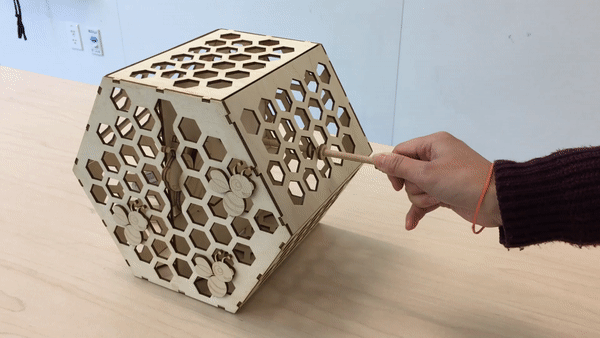

Iteration 1
Iteration 2
Iteration 1
Given this was my first experience using a laser cutter, I kept the design simple. Outside of the hive, the user interacts with the mechanisms handle, which is connected to one gear that interfaces with the gear rack to extend and retract the traveling bee.
Through this iteration, I was able to translate my sketches over to Adobe Illustrator using spatial perspectives in physical measurement and layout. This first attempt was intended to verify function over form.
Iteration 2
For this second iteration, confident in the mechanism, I wanted to create a more visually interesting piece, creating a hexagonal prism with the honeycomb pattern all around and a varied diameter, hive-like handle. The traveling bee is now engraved on both sides. I also refined the measurements, addressing tolerance issues for smoother motion and a cleaner fit, and sanded everything down.
Two small issues that came up: part of the mesh design broke when the handle was attached to the model (pictured; I did not consider the angled position of the board when working on the redesign in Illustrator), the bee does not fully retract into the hive (I needed to extend the back of the model to incorporate a longer gear rack).
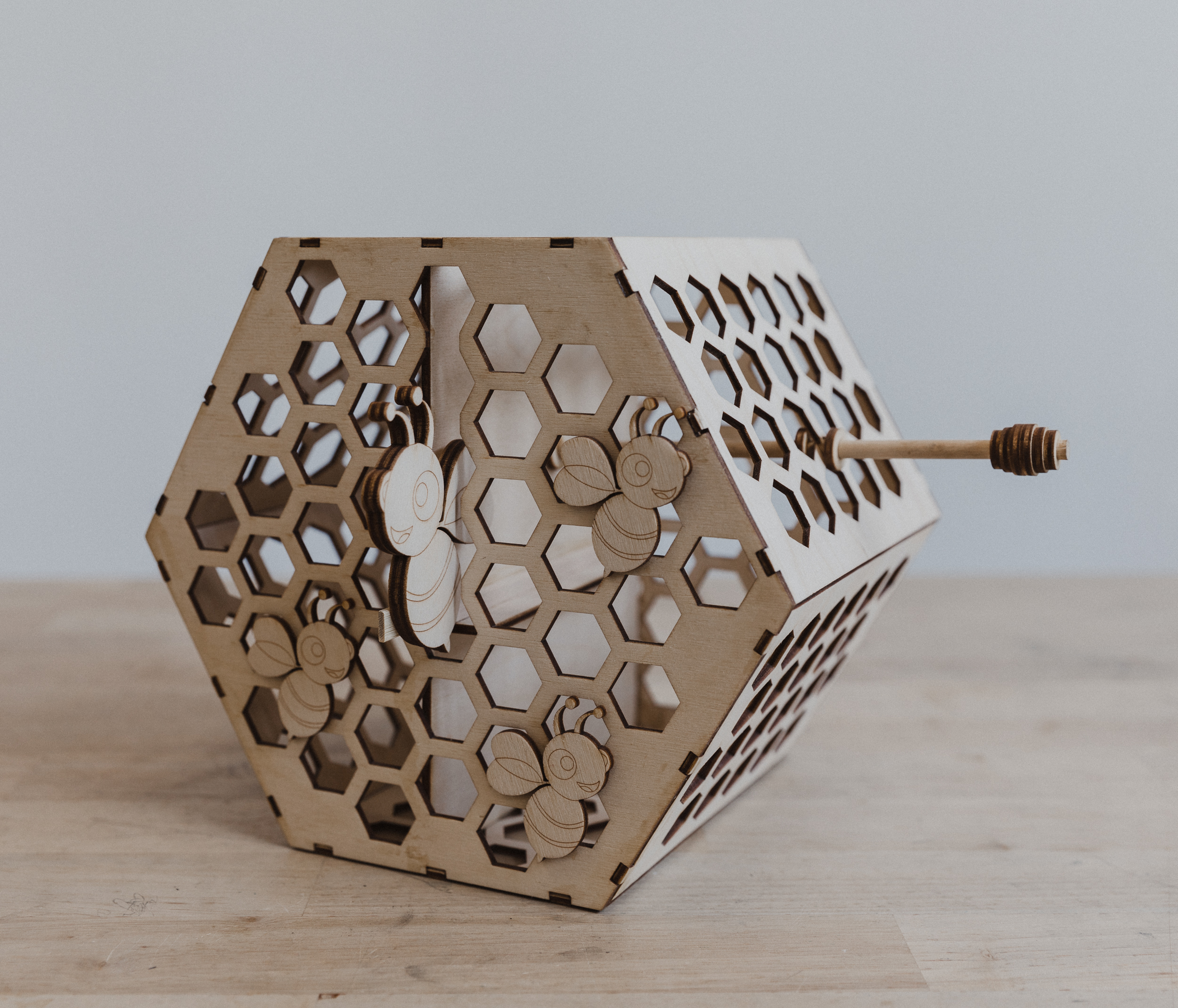
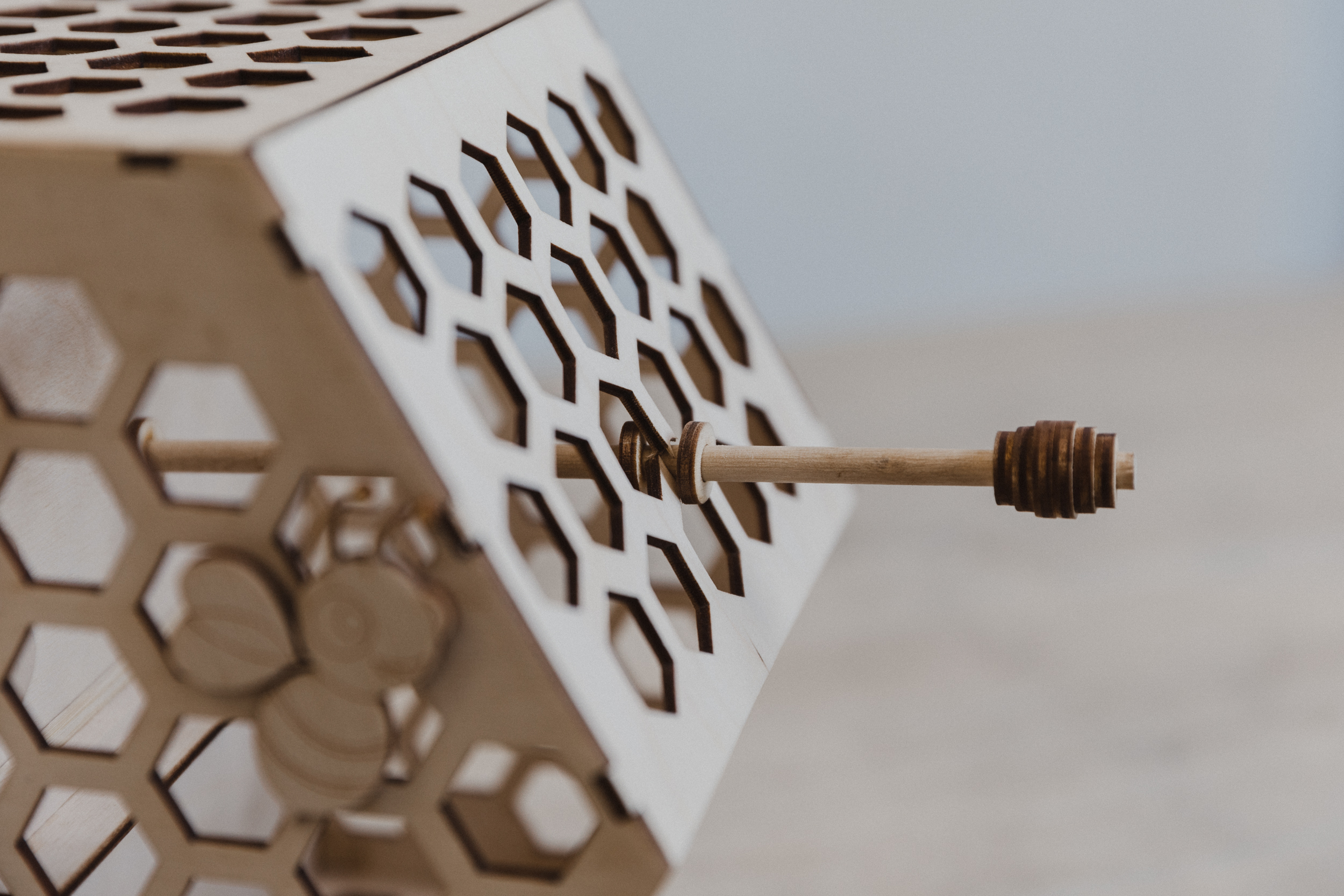
Final Prototype
This final iteration was really just addressing the small aforementioned issues from the previous iteration (reposition the handle insert hole and extend the back of the model).
In a future iteration, I would explore motorizing the mechanism while also retaining some form of hand-functionality.

